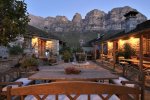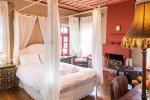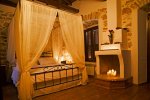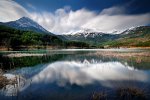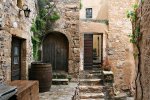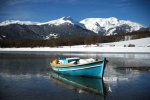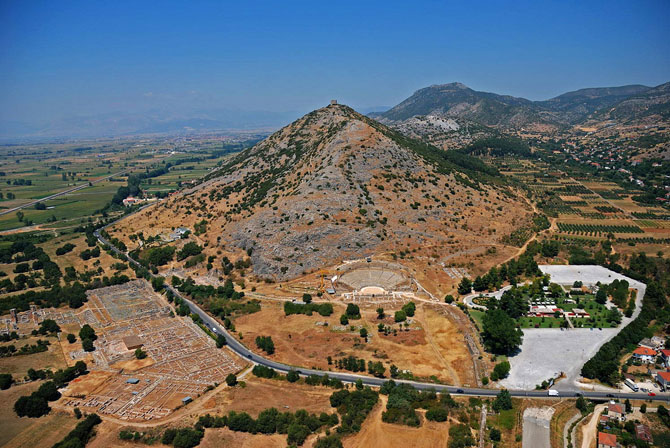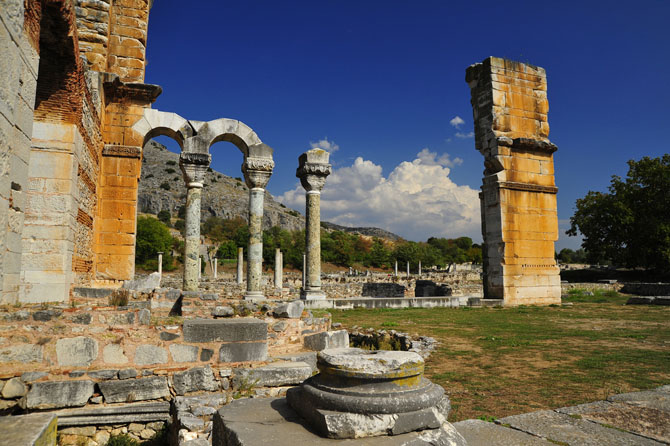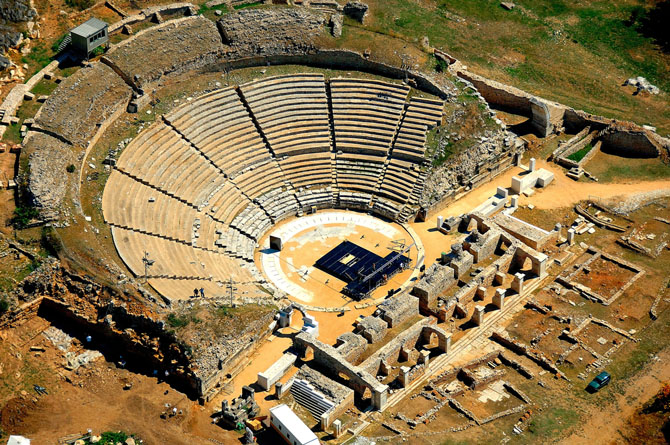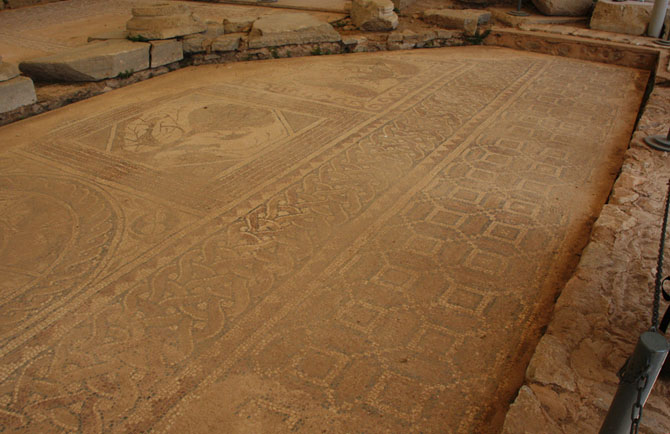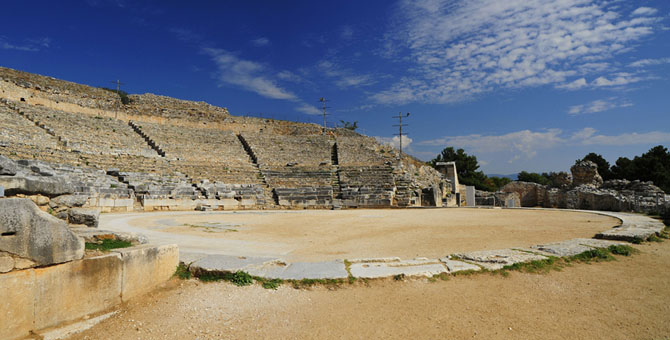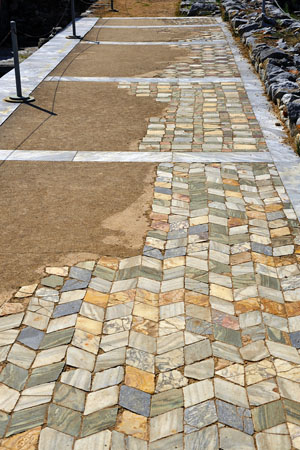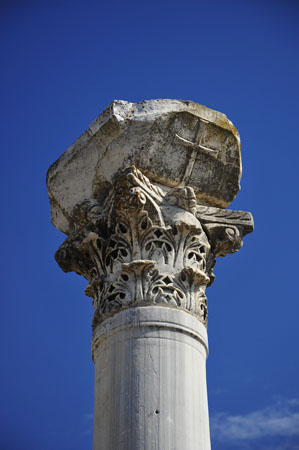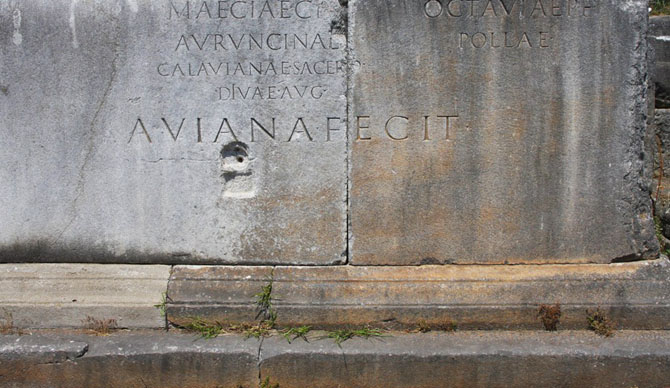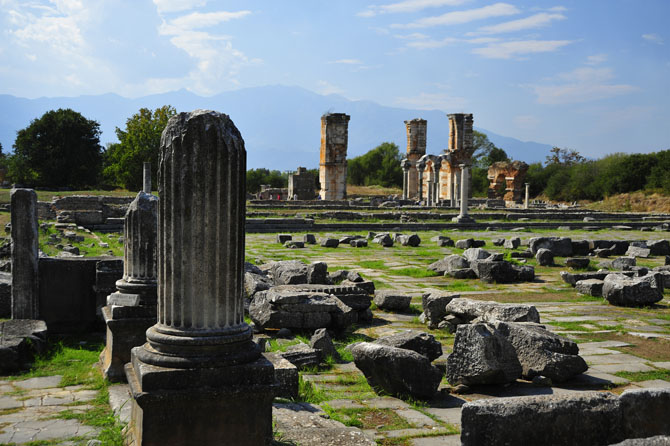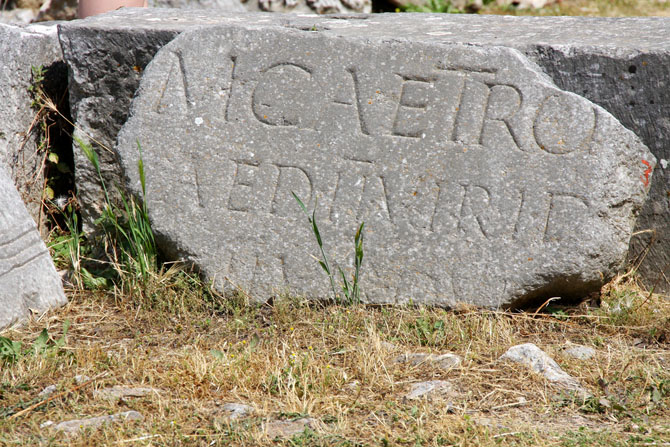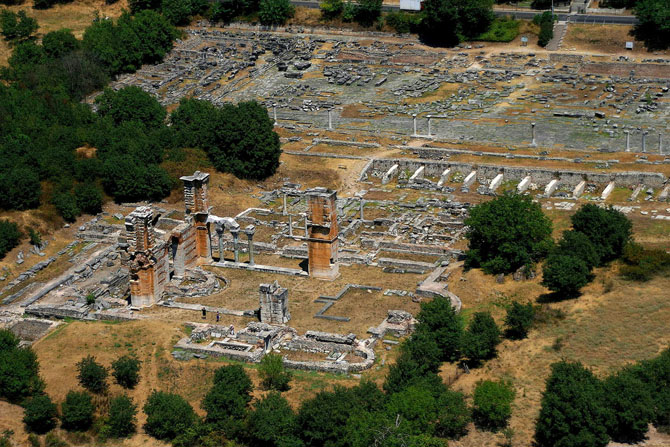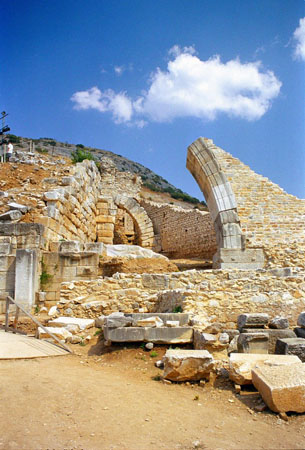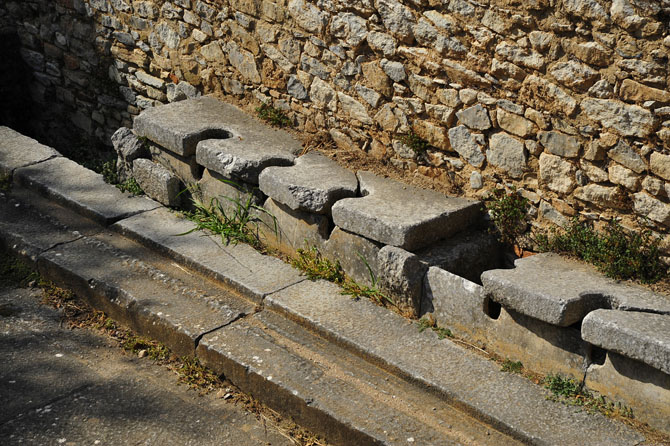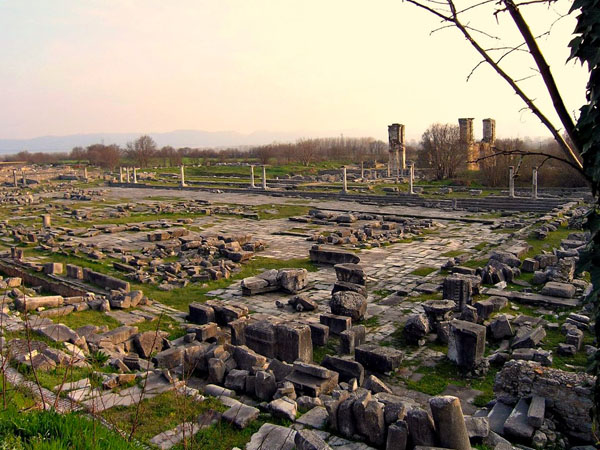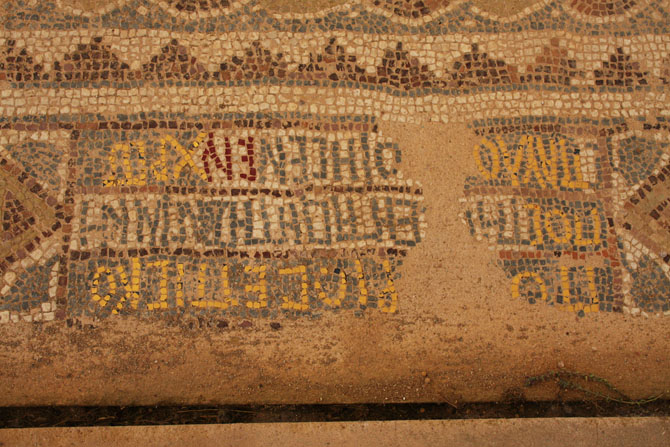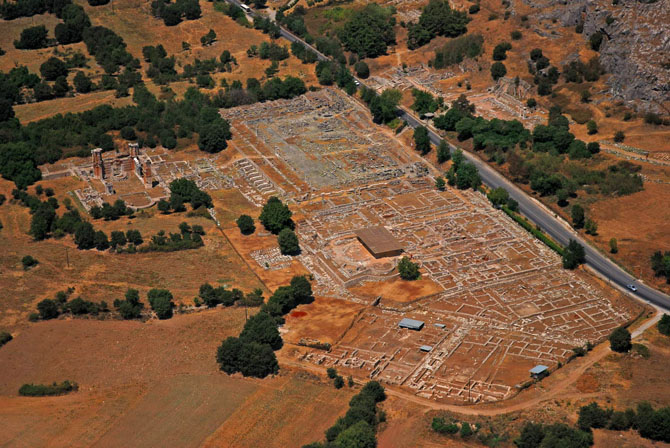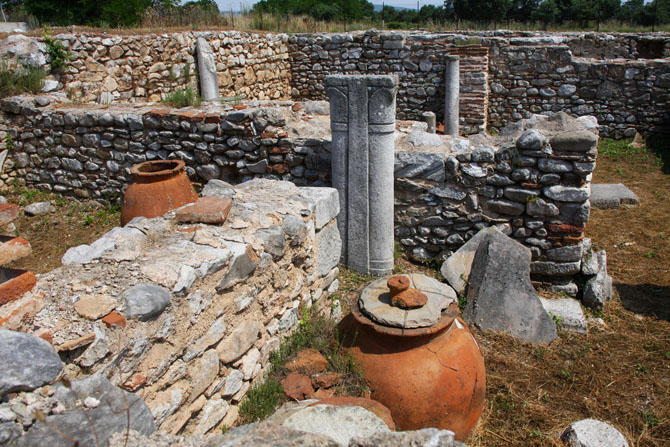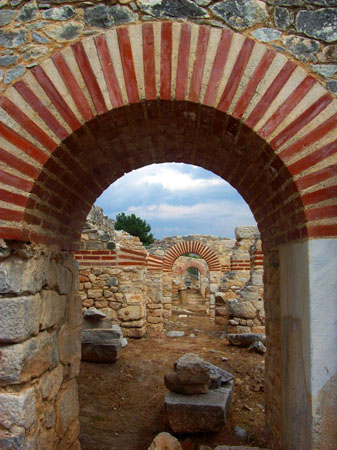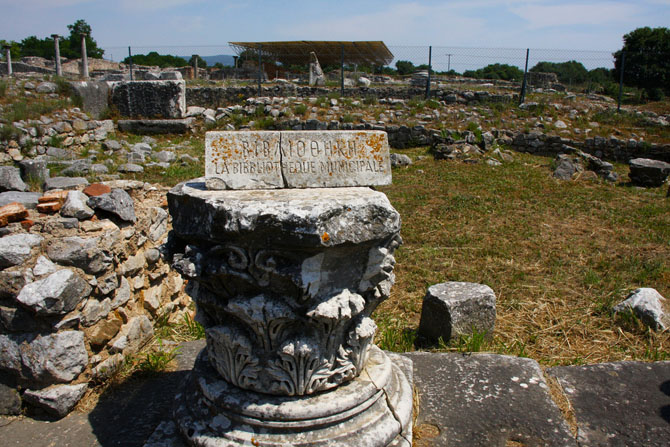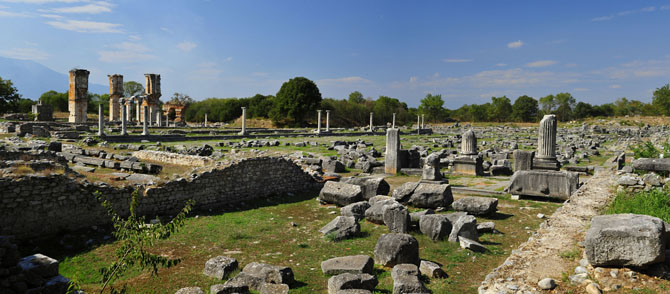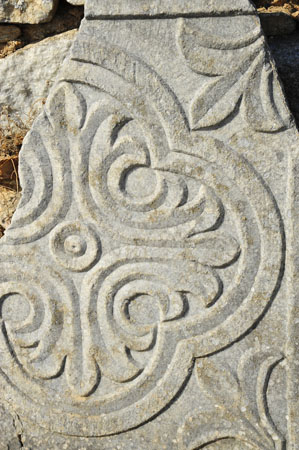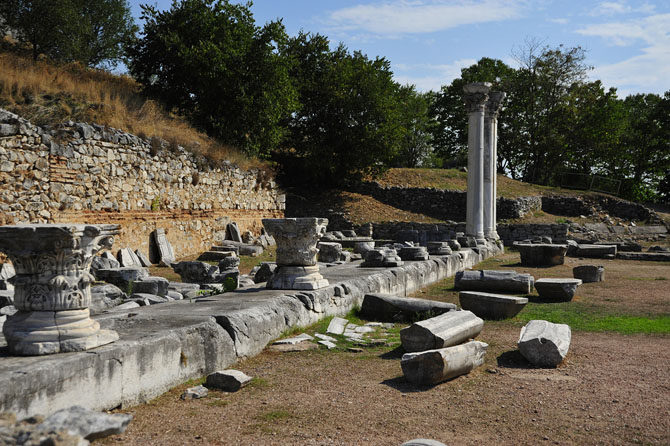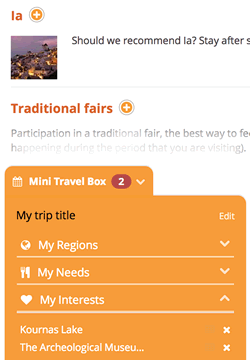Philippi, as every ancient site, was surrounded by strong walls. The acropolis, the current fortress, is the building that visitors notice as soon as they reach the archaeological site of Philippi, a town founded by Philip II of Macedon in 359 BC that was preserved until the 14th century.
Firstly, on the foot of the acropolis, visitors find the Iera ton Vrachon, sacred rocks decorated with the image of various deities. These deities come from different places, including religious elements of the Roman religion, the religion of the East and of Egypt, the Greek pantheon and the local deities of Thrace. Many rocks bear the cross, a symbol of Christianity. Similar images that date back to the Prehistoric period can be still found in the region of Philippi. Rocks illustrate daily life scenes of the prehistoric man, animals, arms and war images similar to those decorating various caves.
Moving to another section, visitors reach the ruins of Basilica A, a paleochristian church that proves the introduction of the Christianity which spread quickly in this region. In the churchyard of the Basilica lies the base of a Roman Heroon and on its east side a carefully constructed chapel. There is also a tap of Corinthian and Ionic order in the west of the atrium as well as many niches. The narthex is consisted of the loft for women and the Baptistery. The columns and the arch are another integral part of the Basilica. The church is separated in three aisles by two series of impressive columns.
The “Prison of Apostle Pavlos” (Saint Paul) is found in the northwest of the atrium of Basilica A. It is a small place that looks like a Roman chapel in which Saint Paul was imprisoned for trying to spread Christianity. Inside the prison, there are images of the life and work of Jesus as well as murals of the martyrdom of Saint Paul. Some of the murals picturing Jesus between two angels or two saints have survived until today. Saint Paul arrived to the city of Ancient Neapoli (modern day Kavala) in 49AC, after a vision that motivated him to come and spread the teachings of Jesus in the region. After Kavala, he went to Philippi passing by the ancient Via Egnatia where he started the missionary work which resulted in the christening of the first Cristian woman in the Baptistery of Agia Lydia and the construction of the Church of Philippi, the first Christian church in Europe.
After the Prison and opposite to it, visitors will find the Roman Forum and the remains of a bema (podium) where the orators used to give their public speeches. Next to it there are parts of some temples or monuments as well as a tap. In the northeast side of the yard lies a temple built in honor of the Emperor and in the southeast side a Library. Shops were locates in the south of the Forum, while in the west there were places like the Voulefterion (Council Chamber), the Court of Justice and the building in which the state archives were held. Moreover, the statue of Tihi, (the deified luck) who was holding the “horn of Amalthea” while sitting on a throne is preserved until today.
At the south side of the Roman Forum lies the Basilica B, an impressive church that had a dome that unfortunately is not preserved today. The main part of the church was separated in three aisles by colonnades. A semicircular arch is preserved to these days. The capitals and other sculptures were decorated with acanthus leaves, clearly influenced by the Byzantine architecture. The Basilica must have been built at the mid-6th century.
Moreover, there were many other buildings at the Roman Agora which have survived, such as the Palaestra (wrestling school), the Roman mansion, the Octagon complex, the Macedonian tomb-Heroon (shrine of a hero), the Baptistery and the Balaneion (baths).
Not far from the site of the Archaeological Museum of Philippi, visitors can find another three-aisled church, the Basilica C that is influenced by the architecture of the other two Basilicas. Basilica C was destroyed by an earthquake in the 7th century AD.
A bit further from the main archaeological site of Philippi visitors will find the center of the modern day village and will admire the ruins of a more recent Basilica which are located outside the walls of the ancient city, next to the main square of Krinides. The so-called “Extra-muros Basilica” came to light by chance in 1955. It is a three-aisled church with a cemetery and many decorated memorial monuments were discovered at its churchyard. The church dates back to the first half of the 4th century and it must have been destroyed by a large earthquake in the 7th century or by the invasion of the Bulgarians during the 9th century. An impressive mosaic representing animals and plants is preserved at the fenced area in front of the Basilica. The monument is not entirely exposed to the public so as to avoid any possible damage.
A tour at the Archaeological Site of Philippi is a unique experience for any visitor, as it includes remains from various periods (the Roman, Byzantine, Hellenistic and Paleochristian periods) which are a proof of the rich history and architecture of the wider region of Philippi. Visitors can observe a part of the city of Ancient Philippi and get to know the civilization and the society of that era.
The site is accessible by bus from Kavala to Drama. The bus stops at Krinides and the Archaeological Site of Philippi is located just a short walk from the bus stop.
T: (+30) 2510 516251
Use the map or the alphabet below to find your favorite destination!
Achaea Prefecture
Aegina
Aetoloakarnania Prefecture
Agathonisi
Agistri
Alonissos
Amorgos
Anafi
Andros
Antiparos
Arcadia Prefecture
Argolida Prefecture
Arta Prefecture
Astypalea
Attiki Prefecture
Kalymnos
Karditsa Prefecture
Karpathos
Kasos
Kastelorizo
Kastoria Prefecture
Kavala Prefecture
Kea (Tzia)
Kefalonia
Kerkyra (Corfu)
Kilkis Prefecture
Kimolos
Korinthia Prefecture
Kos
Koufonisi (Ano & Kato)
Kozani Prefecture
Kythira - Antikythira
Kythnos
Samos
Samothrace
Santorini
Schinoussa
Serifos
Serres Prefecture
Sifnos
Sikinos
Skiathos
Skopelos
Skyros
Spetses
Symi
Syros
Would you like to combine skiing in the morning and then go swimming in the afternoon, all in one region? Click to choose your interests and see in which part of Greece you enjoy them. Combinations are endless!
